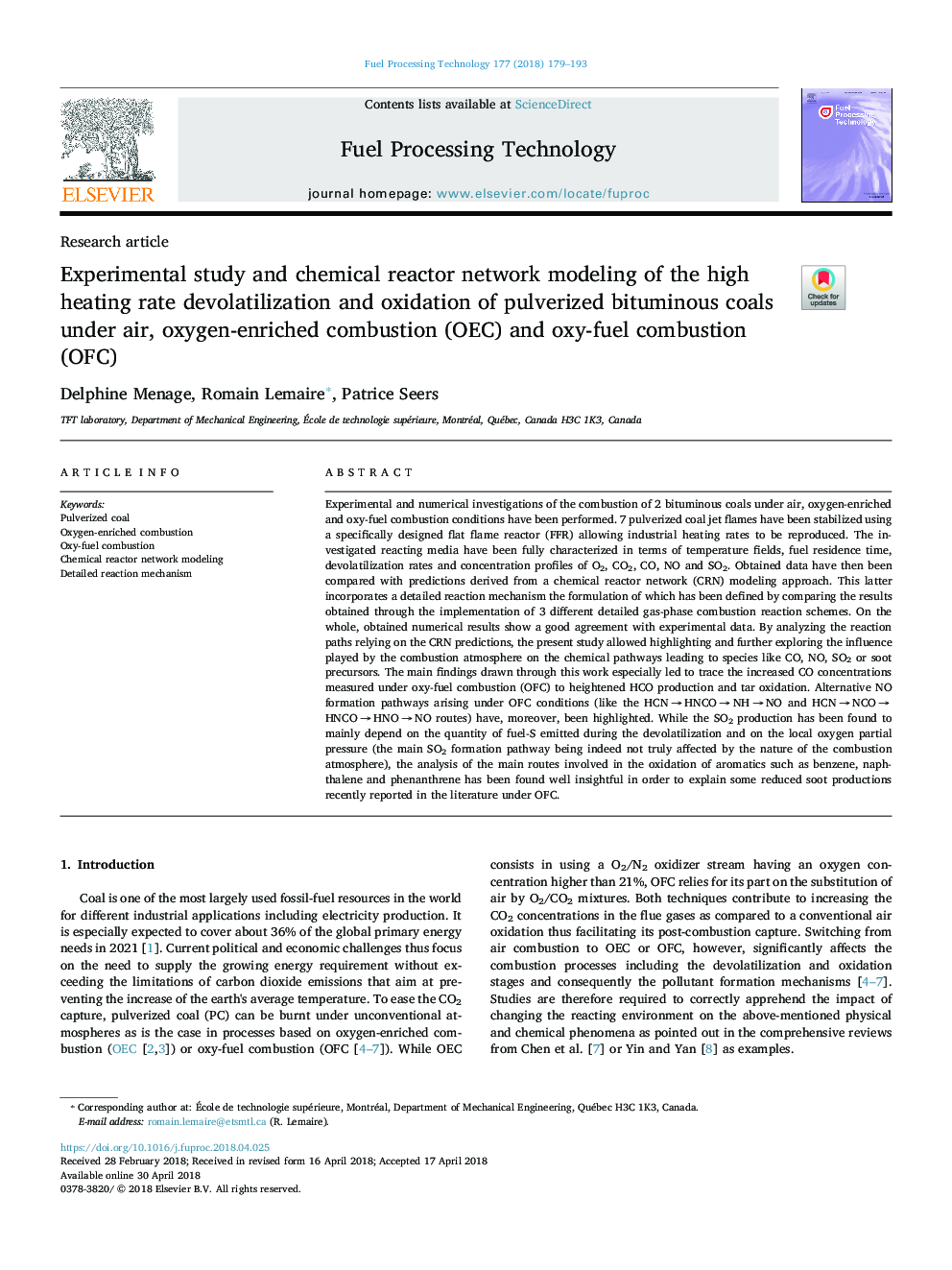| کد مقاله | کد نشریه | سال انتشار | مقاله انگلیسی | نسخه تمام متن |
|---|---|---|---|---|
| 6656327 | 1425369 | 2018 | 15 صفحه PDF | دانلود رایگان |
عنوان انگلیسی مقاله ISI
Experimental study and chemical reactor network modeling of the high heating rate devolatilization and oxidation of pulverized bituminous coals under air, oxygen-enriched combustion (OEC) and oxy-fuel combustion (OFC)
دانلود مقاله + سفارش ترجمه
دانلود مقاله ISI انگلیسی
رایگان برای ایرانیان
کلمات کلیدی
موضوعات مرتبط
مهندسی و علوم پایه
مهندسی شیمی
مهندسی شیمی (عمومی)
پیش نمایش صفحه اول مقاله

چکیده انگلیسی
Experimental and numerical investigations of the combustion of 2 bituminous coals under air, oxygen-enriched and oxy-fuel combustion conditions have been performed. 7 pulverized coal jet flames have been stabilized using a specifically designed flat flame reactor (FFR) allowing industrial heating rates to be reproduced. The investigated reacting media have been fully characterized in terms of temperature fields, fuel residence time, devolatilization rates and concentration profiles of O2, CO2, CO, NO and SO2. Obtained data have then been compared with predictions derived from a chemical reactor network (CRN) modeling approach. This latter incorporates a detailed reaction mechanism the formulation of which has been defined by comparing the results obtained through the implementation of 3 different detailed gas-phase combustion reaction schemes. On the whole, obtained numerical results show a good agreement with experimental data. By analyzing the reaction paths relying on the CRN predictions, the present study allowed highlighting and further exploring the influence played by the combustion atmosphere on the chemical pathways leading to species like CO, NO, SO2 or soot precursors. The main findings drawn through this work especially led to trace the increased CO concentrations measured under oxy-fuel combustion (OFC) to heightened HCO production and tar oxidation. Alternative NO formation pathways arising under OFC conditions (like the HCNâ¯ââ¯HNCOâ¯ââ¯NHâ¯ââ¯NO and HCNâ¯ââ¯NCOâ¯ââ¯HNCOâ¯ââ¯HNOâ¯ââ¯NO routes) have, moreover, been highlighted. While the SO2 production has been found to mainly depend on the quantity of fuel-S emitted during the devolatilization and on the local oxygen partial pressure (the main SO2 formation pathway being indeed not truly affected by the nature of the combustion atmosphere), the analysis of the main routes involved in the oxidation of aromatics such as benzene, naphthalene and phenanthrene has been found well insightful in order to explain some reduced soot productions recently reported in the literature under OFC.
ناشر
Database: Elsevier - ScienceDirect (ساینس دایرکت)
Journal: Fuel Processing Technology - Volume 177, August 2018, Pages 179-193
Journal: Fuel Processing Technology - Volume 177, August 2018, Pages 179-193
نویسندگان
Delphine Menage, Romain Lemaire, Patrice Seers,